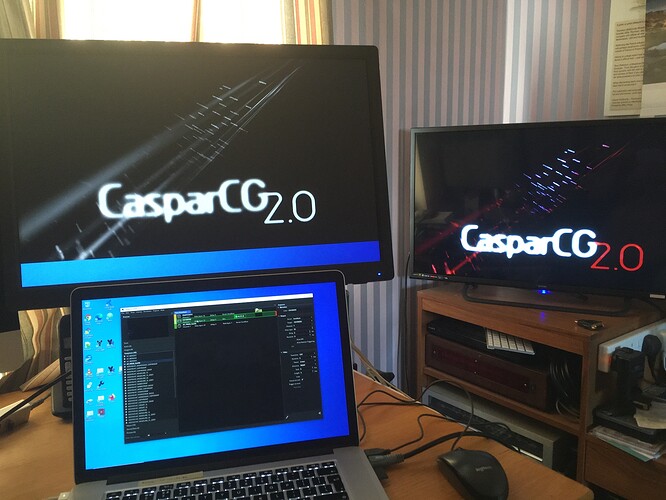As Izx1995 states, you need a pair of outputs available for video and key. As your Atem Mini Pro is HDMI input only you will also need two identical SDI to HDMI converters. The Decklink Duo 2 is a good card choice as you can pair two channels and ensure that the changes in the key output occur exactly in time with the changes in the fill output. Important for dynamic (moving) templates.
If your computers graphics card has multiple HDMI capable outputs, at least 3, you may be able to do some experiments without buying the Duo card, but you will need such a card when you are ready production operations. The outputs from the graphics card are the standard windows operational screen on output 1, a screen consumer at full screen on output 2 and a screen consumer on output 3 at full size.
Connect the graphics card HDMI outputs from outputs 2 and 3 to two inputs on your Atem Mini.
Edit the server configuration to initially set the consumers sections of CasparCG Channel 2 to be something similar to:
<consumers>
<screen>
<device>3</device>
<aspect-ratio>16:9</aspect-ratio>
<stretch>fill</stretch>
<windowed>false</windowed>
<key-only>false</key-only>
<vsync>false</vsync>
<borderless>true</borderless>
<interactive>false</interactive>
<always-on-top>true</always-on-top>
<x>0</x>
<y>0</y>
<width>0</width>
<height>0</height>
<sbs-key>false</sbs-key>
<colour-space>RGB</colour-space>
</screen>
</consumers>
This will be very similar to the config for channel two, the main difference is the device (screen) number. Start your server, and play a video or template on channel 2. As you switch between the ATEM channels connected to the graphics card you should see the video or chromakey template on both ATEM inputs.
Re-edit the server config file for channel 2, changing the key-only entry to true.
<key-only>true</key-only>
This tells channel 2 to output the grey-scale key signal when it outputs any video or template.
Now for the cunning trick. In the client locate the Route Video Layer command (in the Tool Other section). Add this command to the rundown. In the Output section of the Inspector select the server (eg Localhost), set the channel to 2 and the layer to 20. In the Route Video Layer section set Channel 1 Layer 20. When this command is run it tells the server to copy anything playing in layer 20 of channel 1 across to layer 20 of channel 2. The configuration of tells channel 2 to select the key not the fill.
Now play a video or template in channel 2 layer 20. You should find you have one full-colour signal on the ATEM input, and one greyscale picture on the second ATEM input.
Follow the guidance given by Izx1995 on how to configure the ATEM keyer, and you can now develop and test your HTML-5 templates.
I emphasise that this use of the graphics card is only to enable your learning about templates and keys. You must use a Decklink card and SDI to HDMI converters for your operational production system.



